Learning the Ancient Art of Horseback Falconry
I spent a day with one of the few people on the planet still teaching the sport.
There are several ways these birds could maim me. They could slam into me, pummeling me to the ground and knocking me unconscious. They could pierce their lethal talons through the thick leather glove on my wrist, or crush my arm with one squeeze. And they could always scratch or peck my flesh, leaving me a bloody, shredded mess.
These are among the warnings Martin Whitley gives me throughout my first ever lesson in horseback falconry. “Are you feeling brave?” he asks, holding a golden eagle as I sit atop one of his horses, a retired racehorse named Caymans. Caymans, too, could do some damage. If he spooks, I’m in for the fastest ride of my life, thundering toward the moors before anyone can stop us. If I fall, I’ll have only a few seconds to contemplate my fate before smashing into the ground. But Caymans remains still. I extend my arm, allowing Martin to place the eagle on my wrist.
Flying an eagle while sitting on a horse isn’t something I get to do every day. I’ve traveled to Dartmoor National Park in Southern England for what in all likelihood will be a once-in-a-lifetime experience. Whitley’s Dartmoor Hawking is one of the few places on Earth where equestrians can still learn an ancient sport: mounted falconry, or flying birds of prey from horseback.
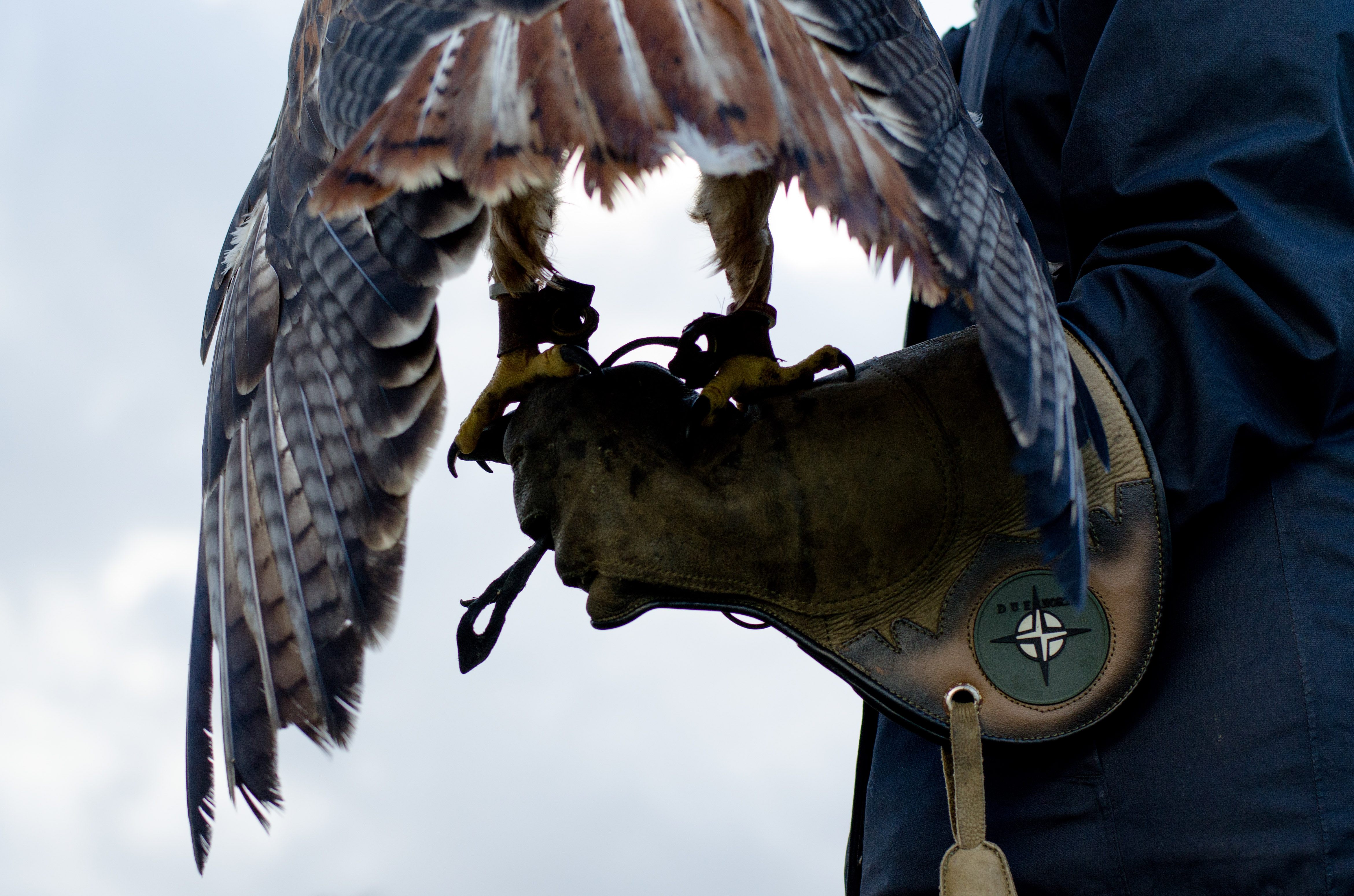
I’ve ridden horses since I was seven and have had my own horse for the last 12 years. I spend so much time around horses that I often feel more at home at a stable than in a human’s house. But my experience with birds doesn’t stretch far beyond rescuing the occasional sparrow from my favorite barn cat’s mouth.
As eager as I am to try something new, participating in a sport that centers around death makes me uneasy. I’m the kind of vegetarian who can’t even stomach killing a mouse that wanders into my apartment, so the thought of using an animal to take down another animal makes me decidedly uncomfortable.
But this particular falconry class doesn’t involve hunting. It’s a crash-course on the basics, a chance to learn the mechanics of the sport without using the birds for their true purpose. It’s also a chance to get unusually close to magnificent raptors, and to learn a new equestrian skill. Until recently, taking a horseback falconry class wasn’t something I’d been aware a person could do.

I’ve never tried any type of falconry before today, though it turns out I’ve been exposed to it in a variety of ways without realizing it. Words and phrases associated with falconry have shaped the English language. Common idioms—such as to be “under someone’s thumb” or “wrapped around their finger”—originally referred to how a falconer secures a bird before setting it off to fly. William Shakespeare, an amateur falconer himself, peppered his plays with hawking jargon. References to “hoodwinking” (to cover a bird’s head with a hood) and “rousing” (when a bird shakes its feathers as a sign of contentment) appear throughout his work.
Of course, falconry existed long before Shakespeare’s time. There’s good evidence humans have been using birds to hunt since prehistory, upwards of 12,000 years ago. Originally, it was not a sport, but a means of acquiring food, even if was typically reserved for nobility. By the Middle Ages, the practice was so popular across Europe that even peasants had their own hunting birds (though their social class still dictated exactly which species they were permitted to keep). Wealthier medieval falconers often rode horses during their hunts, as the animals’ speed and endurance meant they could cover more ground at a faster pace.
It wasn’t until the 19th century that European interest in the sport waned. Hunters traded in their feathered companions for firearms, and the French Revolution brought about a decline in traditionally aristocratic activities.

It took a century for interest in falconry to pick up again. Today, there are at least 10,000 falconers throughout the world, and most of them hunt for pleasure rather than survival. The sport is strictly regulated, and the birds are often used for more than just hunting. Some are put to work as pest control, particularly for farmers, while others are trained for military purposes.
Despite falconry’s modest resurgence, flying a raptor while riding a horse remains all but obsolete. Horses are still used in falconry in parts of Central Asia—watching mounted hunters fly golden eagles is a highlight of Mongolia’s Golden Eagle Festival—but even there, the tradition is at risk of disappearing.
To have the chance to sit atop one of the most powerful prey animals while an apex predator with a wingspan the size of a grown man clenches your wrist with its talons is a rare opportunity, to say the least. And in the Western Hemisphere, Dartmoor Hawking is the place to do it.

We move through the barn, where horses crane their heads over doors, birds shriek, and dogs frolic about. Whitley talks to the animals as we pass, greeting his horses and telling the birds and dogs to hush, like a parent scolding his rowdy children. He is, in a way, their parent. Each of his raptors was bred in captivity, since British falconers can only work with captive-bred birds. He usually acquires his birds when they’re young, around the time their bird mother would begin teaching them to hunt.
His falconry horses, meanwhile, have had previous owners and trainers. They’re all Thoroughbreds, and not just any Thoroughbreds, but retired racehorses. “Dartmoor’s a really wild place, it’s really tough going,” he says. “I want a horse that’s quick on its feet because if I’m watching a flight, I don’t want to be placing my horse’s feet on the ground.”
Whitley first began flying hawks from horses in 2001, and after taking a break from riding, picked the sport back up in 2013 before opening Dartmoor Hawking with his wife Philippa in 2015. Their main business is falconry demonstrations and lessons, which they offer from a scenic piece of land atop a hill on the Bovey Castle estate. The wet, wild moors of Dartmoor National Park are just over the ridge, which is where Whitley takes his horses, birds, and dogs when he goes hunting.
We head to the weigh station near the barn’s back door. Martin places each bird on the scale before I fly them—too thin and hungry, and they won’t be healthy enough to fly; too fat and full, and they won’t have the motivation to hunt. I won’t be hunting with them, though. I’m here to fly them, to learn to hold and release them. Rather than racing through the sky in search of prey, the birds will be passing between me and a wooden perch.
The first bird I meet is Merlin, an 18-year-old, 4.5-pound Eurasian Eagle Owl. Martin places him on my gloved arm and weaves his jesses (thin leather straps) between my fingers, instructing me to move with Merlin as though I’m carrying my favorite drink. I walk in a haphazard figure-eight, my upper arm clasped to my ribcage and my forearm extended at a 90-degree angle. Merlin rests on my arm like a feathered growth, his head bobbing and swiveling as I move. And though his eyes, two fiery, burnt-orange saucers, remain wide in a way that makes him seem surprised, he’s actually content. He rouses, briefly ruffling his feathers before settling again into stillness.
Next I fly Charlie, a five-year-old, 3.5-pound ferruginous hawk. He soars between me, Martin, and a perch, landing at each spot with ease. With Harold, a 15-week-old, nine-ounce falcon, I continue getting comfortable handling birds, placing my fingers near their talons to secure their jesses and sticking my hands near their faces to remove their hoods.
After a morning filled with what Martin refers to as the “boring” part, it’s time to move on to the highlight of the day. At lunch, I learn I won’t be riding Tommy, Dartmoor Hawking’s calmest, most-used falconry horse. Because I’ve done so well with the birds, I get to ride Caymans.

Before his falconry career, Caymans, a 13-year-old, 17-hand gelding, raced in Australia, Dubai, and the United Kingdom, earning more than £200,000. He was forced to retire after losing his right eye to an infection. Though he may no longer race, he still looks like an athlete: his clipped, bay coat hugs his muscles like a tight t-shirt.
Dawn, a four-year-old, two-pound falcon, is the first bird I fly while on Caymans. We walk around the yard, Dawn sitting on my arm as I steer Caymans with one hand. Caymans fidgets, shaking his head, but soon slows his pace. It’s easy to imagine I’m some kind of medieval huntress in training, learning to handle these two beasts before taking to the moors for a high-speed, exhilarating hunt.
I take off Dawn’s hood, trusting Caymans to stand still while I use my right hand—the hand I’ve been holding the reins with—to slip the cover off the bird’s head and let her take flight. Caymans doesn’t flinch as a blur of feathers streaks by, he’s so used to this.
I’ve done well enough with Dawn that there’s time for a big finale: a chance to fly a golden eagle. Floki, like me, is new to mounted falconry. Martin only got him 10 days before my class. Most of Whitley’s students fly Artemis, an 11-pound female golden eagle, but at this point my arm is tired, so I opt for the smaller bird. Floki has never been flown from the back of a horse before, and Martin warns me there are no guarantees things will turn out well.

My right hand fumbles near Floki’s head until finally, my fingers clutch his hood and slide it off his face. Making brief eye contact with an eagle, a creature that can spot rabbit-sized prey over a mile away, is, as someone who struggles to recognize my coworkers without my glasses on, humbling.
Floki shifts on my wrist as I raise my arm to the side, his cue to launch. He stretches his wings, revealing a six-foot wingspan. His feathers crash into my face in a flurry of softness and strength. As Floki prepares for takeoff, his right wing drapes across my upper back. I’m not much of a hugger, but this is an embrace I can get excited about. And then he’s off, flapping his great wings in a whoosh of power, swooping mere feet above the earth.
I fly Floki a few more times, aiming him toward the perch for our final round, a milestone Martin had been working toward. Martin and Philippa cheer as his outstretched talons clasp the wood. Caymans stands beneath me, solid and steady, each time the eagle launches from my aching arm.

It’s an incredible dynamic, that of a horse, rider, and bird. It is, as Martin says, a simple relationship, but also a complicated one. The horse, human, and bird must all trust one another, a kind of familiarity that takes patience and understanding to build. I’d thought the birds might be wary of a stranger, but somehow we manage to work as a team. It feels a bit like being the filling in some kind of racing animal sandwich: below me, a horse bred and trained to run fast, and on me, a bird evolutionarily engineered to speed through the sky, all three of us relying on one another for a sense of security. As Martin later tells me, that’s the whole point of this class, to learn to understand the relationship between you and the animals. “It’s something unique,” he says, “because very few people are doing it.”
Individual Falconry from Horses lessons at Dartmoor Hawking start at £195. For details visit www.dartmoorhawking.co.uk.



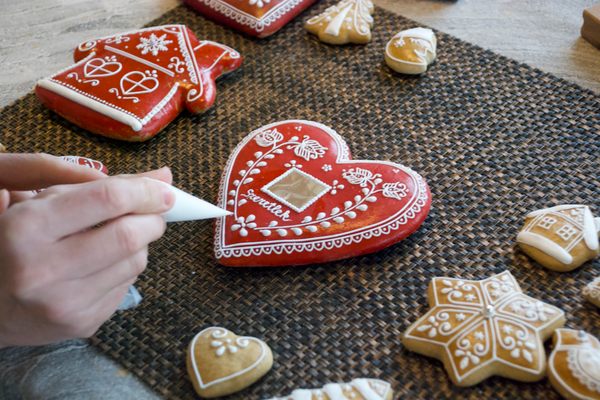
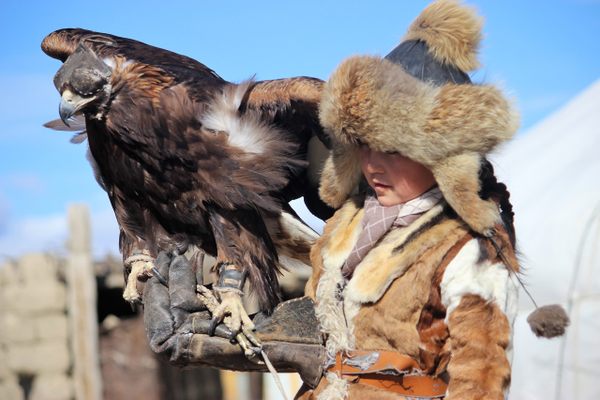
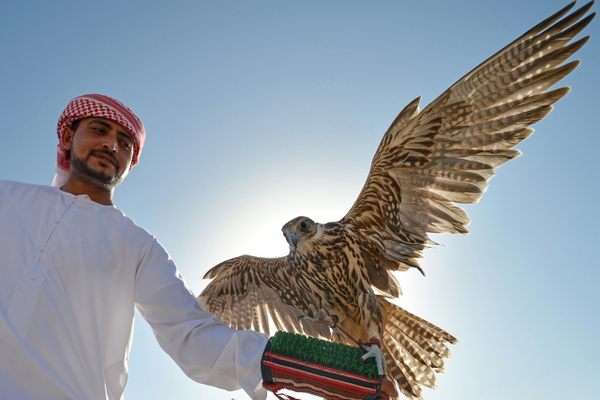



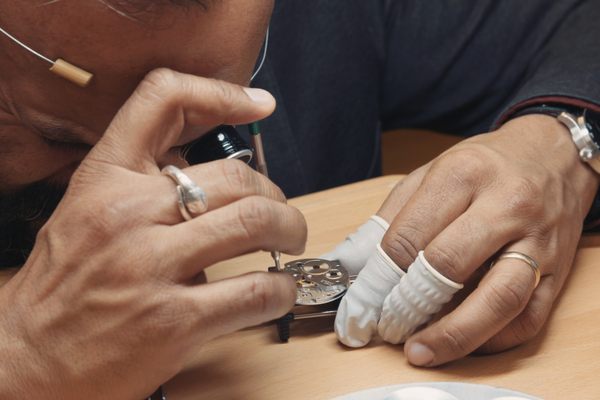

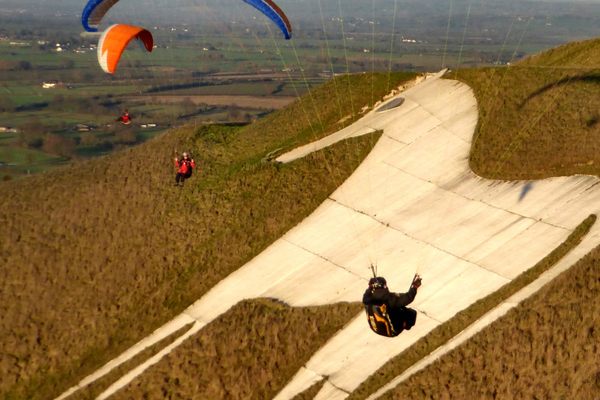












Follow us on Twitter to get the latest on the world's hidden wonders.
Like us on Facebook to get the latest on the world's hidden wonders.
Follow us on Twitter Like us on Facebook